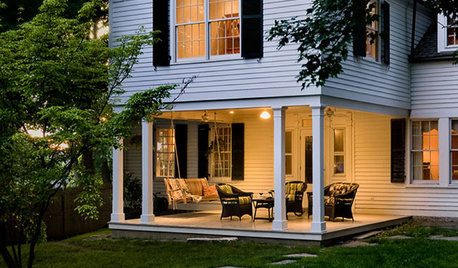Newbie Lawn Renovation
AStaheli
12 years ago
Related Stories

LANDSCAPE DESIGNCalifornia Says Goodbye to the Sprawling Ornamental Lawn
New state rules will effectively limit turfgrass to 25 percent of the landscape in most new and renovated yards
Full Story
SMALL HOMESHouzz Tour: An Illinois Loft Sparks Renovation Fever
Home improvement newbies (and newlyweds) find joy and a new income source while redoing their space themselves
Full Story
LANDSCAPE DESIGNGet Along With Less Lawn — Ideas to Save Water and Effort
Ditch the mower and lower your water bill while creating a feast for the eyes with diverse plantings and gathering places
Full Story
GARDENING GUIDESSmall Gem Lawns: More Impact From Less Grass
Instead of letting the lawn sprawl, make it a shapely design element in your yard. You’ll reap benefits both practical and aesthetic
Full Story
LAWN ALTERNATIVESStop Fighting the Patchy Lawn!
Here are 3 situations where a garden may be a better idea than more turfgrass
Full Story
FRONT YARD IDEASBefore and After: Front Lawn to Prairie Garden
How they did it: Homeowners create a plan, stick to it and keep the neighbors (and wildlife) in mind
Full Story
GARDENING GUIDESHow to Prep Your Ground for a Healthy New Lawn
Seed or sod that falls on weedy, lumpy soil is a wasted effort. Follow these steps to ensure that your new lawn will thrive
Full Story
GREAT HOME PROJECTSHow to Replace Your Lawn With a Garden
New project for a new year: Lose the turfgrass for energy savings, wildlife friendliness and lower maintenance
Full Story
SAVING WATERHouzz Call: Are You Letting Go of Your Lawn?
Many facing a drought are swapping turf for less thirsty plantings. If you’re one of them, we’d like to hear about it
Full Story
SELLING YOUR HOUSEThe Latest Info on Renovating Your Home to Sell
Pro advice about where to put your remodeling dollars for success in selling your home
Full Story







AStaheliOriginal Author
john_in_sc
Related Professionals
Oconomowoc Landscape Architects & Landscape Designers · Winder Landscape Architects & Landscape Designers · Norwood Landscape Contractors · Alpharetta Landscape Contractors · Berkeley Heights Landscape Contractors · Hawthorne Landscape Contractors · Lyndhurst Landscape Contractors · North Highlands Landscape Contractors · Wells Landscape Contractors · Irvington Landscape Contractors · Reisterstown Landscape Contractors · Long Branch Swimming Pool Builders · Rockwall Swimming Pool Builders · Thousand Oaks Swimming Pool Builders · Tucson Swimming Pool BuildersAStaheliOriginal Author
AStaheliOriginal Author
tiemco
AStaheliOriginal Author
dchall_san_antonio
tiemco
AStaheliOriginal Author
tiemco
AStaheliOriginal Author
tiemco
AStaheliOriginal Author
tiemco
dchall_san_antonio
AStaheliOriginal Author
tiemco
AStaheliOriginal Author